Search the Special Collections and Archives Portal
Search Results

John Fudenberg oral history interview: transcripts
Date
Archival Collection
Description
Oral history interviews with John Fudenberg conducted by Barbara Tabach and Claytee D. White on May 3, 2018 and May 23, 2018 for the Remembering 1 October Oral History Project. In this interview, John Fudenberg, the coroner for Clark County in Las Vegas, Nevada, gives an account of his experience during the October 1, 2017 mass shooting on the Las Vegas Strip and what his role was during the tumultuous days after the shooting. He explains how he and the staff of the coroner's office prepared for the large number of casualties as well as their arrival at the Route 91 Harvest festival venue. Fudenberg speaks of setting up the Family Assistance Center at the convention center and how it supported the community but also aided the coroner's office in gathering information about the deceased and identifying them. Fudenberg discusses the main job of the Coroner's Office during the first week after the shooting, which was to autopsy the bodies and communicate with the families, as well as the Police Department. He also talks about the emotional impact the shooting and its aftermath had on him and his staff members and the wellness program they implemented, of which trauma yoga and meditation had a large impact.
Text
Tina Quigley and Perry Ursem (Las Vegas Global Economic Association) oral history interview conducted by Kelliann Beavers and Elia Del Carmen Solano-Patricio: transcript
Date
Archival Collection
Description
From the Lincy Institute "Perspectives from the COVID-19 Pandemic" Oral History Project (MS-01178) -- Business interviews file. Note: Perry Ursem's last name is misspelled in the transcript.
Text
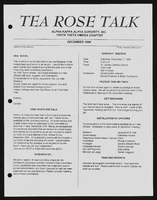
Alpha Kappa Alpha Sorority, Theta Theta Omega Chapter "Tea Rose Talk" newsletters
Date
Archival Collection
Description
From the Alpha Kappa Alpha Sorority, Incorporated, Theta Theta Omega Chapter Records (MS-01014) -- Chapter records file.
Text
Dina Neal (Nevada Legislature, Senator) oral history interview conducted by Magdalena Martinez and Makada Henry-Nickie: transcript
Date
Archival Collection
Description
From the Lincy Institute "Perspectives from the COVID-19 Pandemic" Oral History Project (MS-01178) -- Elected official interviews file.
Text
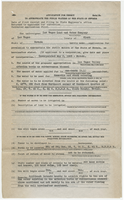
Application for permit to appropriate the public waters of the State of Nevada, November 1939
Date
Archival Collection
Description
Application for the Las Vegas Land and Water Company to appropriate the water from a new well on the Las Vegas Ranch. Original Collection: Union Pacific Railroad Collection 97-19
Text
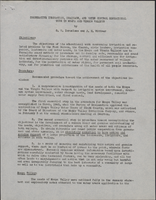
Report on cooperative irrigation, drainage, and water control educational work in Moapa and Virgin Valleys, October 10, 1945
Date
Archival Collection
Description
Discussion of the necessity of public education in the Moapa and Virgin valleys in regards to irrigation, drainage, water storage, domestic water, and flood control. Report was written October 10, 1945, attached application was dated February 3, 1945.
Text
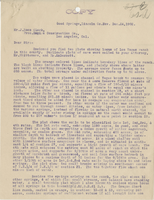
Report surveying Las Vegas Ranch from J. T. McWilliams (Good Springs, Nevada) to J. Ross Clark (Los Angeles), December 24, 1902
Date
Archival Collection
Description
McWilliams' summary of his findings in his survey of the Las Vegas Ranch, including land boundaries and water resources. Link to one of the plats mentioned in the letter is in references field.
Text
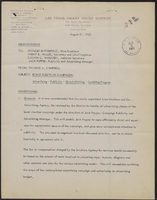
Memo from Thomas A. Campbell to Spencer Butterfield and others about the bond election campaign, August 31, 1953
Date
Archival Collection
Description
Details of advertising campaign to promote the bond election
Text
Jerry Jackson Papers
Identifier
Abstract
The Jerry Jackson Papers, 1953 to 2009, contain materials related to Jackson's career in entertainment as a director, producer, choreographer, writer, lyricist, and costume designer. Jackson's work on
Archival Collection
Martin Stern Architectural Records
Identifier
Abstract
The collection is comprised of drawings (1950-1990) completed by American architect Martin Stern and/or his architectural firm, Martin Stern Jr., AIA Architect and Associates, and contains 400 cubic feet of materials including 710 drawings from over 300 different projects involving over 100 buildings. Stern’s work focused on the resort centers of Las Vegas, Nevada; Reno, Nevada; Lake Tahoe, Stateline, Nevada; and Atlantic City, New Jersey. The materials feature hand-drawn architectural drawings, ranging from pencil and ink on tracing paper preliminary sketches to ink on Mylar (TM) construction documents, and a number of artist’s renderings, used for presentations and promotional materials. The drawings also contain work from a number of consultants, engineers, and other architects who collaborated on the development of the various projects. The collection includes architectural drawings for: hotels, casinos, integrated casino resorts, office towers, multi-family residential developments, and custom single-family homes.
Archival Collection
